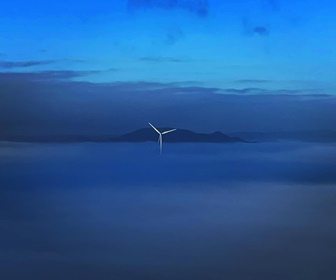Investments in wind energy in Europe more than doubled in 2023 compared to 2022, driven by record financing of offshore wind projects. An easing of inflationary pressures, greater certainty in electricity markets, and improved tariff indexation by Governments created a more favourable investment climate.
Despite a tightening of financing conditions, Europe invested a record €48bn in wind energy last year - representing 21.2 GW of financed capacity. New investments in offshore wind alone amounted to €30bn, a stark contrast to 2022 when almost no offshore wind farms were financed. Onshore wind investments were comparable with previous years at €18bn.
Last year's significant rebound was due to a relative stabilisation of costs after two years of significant inflation in steel and other commodity prices. It was also thanks to an improvement in Government policies, with simplified permitting allowing for a larger projects pipeline. Additionally, Government’s growing recognition of the need to index auction tariffs and prices contributed to restoring investor confidence.
Europe approved significantly more permits for new onshore wind farms in 2023 than in previous years, largely due to new EU rules on renewables permitting. Germany and Spain permitted 70% more onshore wind than in 2022, with Germany permitting 7.5 GW of onshore wind projects. France, Greece, Belgium, and the UK also experienced higher permitting volumes. And Governments awarded a record 27 GW of wind in auctions in 2023 - half onshore and half offshore.
The political outlook on wind energy changed in Europe in 2023, with the EU and national Governments recognising the industry's challenges and the need for urgent support. The EU Commission's Wind Power Package in October outlined 15 concrete and immediate actions to strengthen the industry. In December, 26 EU Member States and 300 companies signed the European Wind Charter, endorsing the Package and committing to take necessary actions.
The Package and Charter commit national Governments to support the European wind industry by improving auction design, fully indexing prices to reflect costs, tightening pre-qualification criteria, and providing clearer visibility on auction schedules and volumes for better industry planning. The Package also commits the EU Commission to support the wind industry through the EU Innovation Fund. The European Investment Bank (EIB) adopted a €5 billion counter-guarantee scheme for wind energy manufacturing, enhancing access to finance for wind turbine manufacturers.
The recently agreed EU Net-Zero Industry Act (NZIA) enshrines in law the need to tighten pre-qualification criteria and sets a target of 36 GW a year for wind turbine manufacturing in Europe.
WindEurope forecasts that the EU will install an average of 29 GW per year from 2024-2030, bringing the EU's installed wind capacity to 393 GW by 2030. This means that the EU wind energy target for 2030 is within reach.
The biggest threat to the accelerated expansion of wind energy now is the timely expansion of Europe's onshore and offshore electricity grids.









